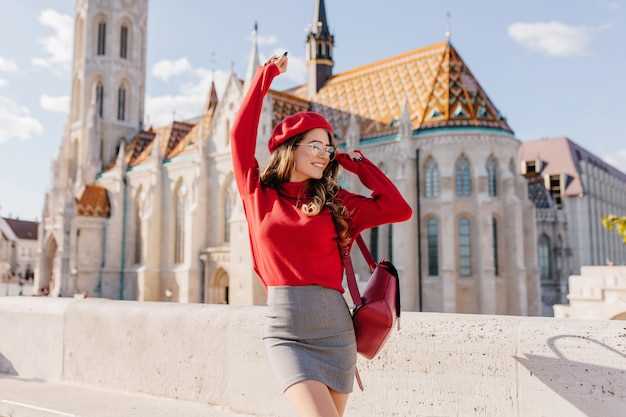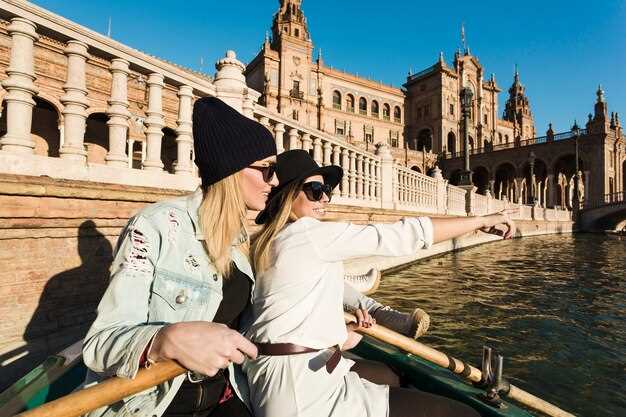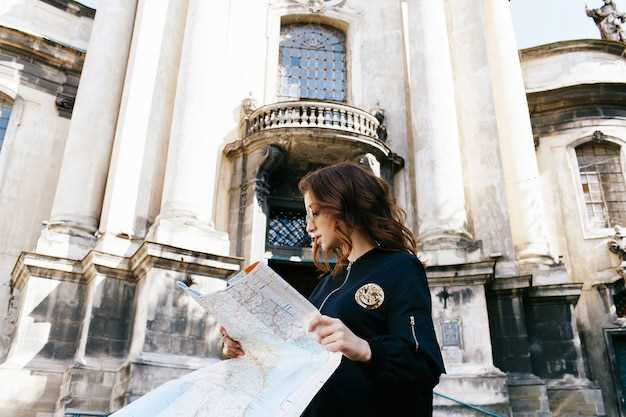
Begin with the Castle Walk to capture the city’s dramatic skyline and the quiet charm of Castle Hill. This concise route makes a strong first impression, helps you cover the highlights in three hours, and leaves you time for a stroll along the Danube back toward your hotel. This approach that makes the most of your three hours is perfect for travelers who want depth without fatigue.
From the Parliament area on the Pest side, you step into a bustling, compact loop that includes the Chain bridge and the riverside promenade. Crossing the bridge gives you instant access to Buda’s location, where you’ll find the Royal Palace, the Matthias Church, and the viewpoints that invite you to capture sweeping views of the river and the city.
In the Castle Hill cluster you’ll find Fisherman’s Bastion and the courtyards of the castle, with terraces that offer beauty and photo-ready angles. Typically, you’ll spend about 40 minutes at the hill, 15 minutes at the Parliament area, and 25 minutes for the Danube riverbank, with short breaks while you admire the architecture and often see street performers. Having a light jacket helps, and good walking shoes make the uphill stretches easier.
For an alternative approach, you can combine this walk with a quick river cruise that is offering new angles on the Parliament and the bridges. Everyone can enjoy the same core sights, while the boat provides a fresh perspective and enables you to capture reflections in the water. The boat option is especially nice in warm weather and is a smooth way to finish the route without retracing steps.
Food tip: after the walk, seek out a traditional goulash served with paprika and dumplings at a nearby bistro. This option is easy for everyone and fits neatly into the schedule without a long wait. It’s a perfect way to unwind, reflect on the day, and head back with memorable stories of the city’s beauty. The nearby eateries cluster around the location where the Castle Hill and Danube meet, making logistics simple for a relaxed finish.
Practical logistics help you run on time: meet near Deák Ferenc tér or at a tram stop along the Danube, with the stroll starting around 9:00–9:30 during high season. Wear comfortable shoes; the route is compact, with most walking at a gentle pace. To keep everyone comfortable, guides provide clear commentary and optional headsets for groups, ensuring you can hear every story without crowd noise.
Budapest Grand City Tour overview: 3 hours, iconic sights, and on-foot Castle Walk
Take Budapest Grand City Tour as your must-do for a 3-hour immersion that pairs iconic sights with an on-foot Castle Walk, like a compact snapshot of Budapest.
The route threads through central Pest to the Castle District, with the Danube bank framing views of the Parliament, which glows illuminated after sunset. The english commentary helps you dive into centuries of architecture and history, while clear sightlines make photos pop.
Key stops include the Parliament, Chain Bridge, St. Stephen’s Basilica, and Matthias Church. The walk reaches Fisherman’s Bastion for panoramic looks over the city, and on a good day you can spot Bratislava across the Danube.
To cater to english and spanish groups, guides offer bilingual commentary and captions. Wi-fi is available at meeting points, and a gentle pace keeps the walk enjoyable for first-time visitors. The policy on photography is straightforward: no flash inside churches, and please respect resident privacy; no hard sell of tickets, so you can leave with no pressure.
Practical tips: bring water, comfortable shoes, and a light layer–the route climbs stairs at the Castle Hill. Leave enough time for photo breaks and soaking in the atmosphere; the experience is amazing for europe-bound travellers, and it is unique in its blend of history and view. People travelled from across europe to join this route, and tributes to Hungarian figures weave through the stops. You may notice horse statues and ornate reliefs that add texture to the walk. Times of day matter: sunset lighting adds magic, while morning hours keep crowds smaller. It enhances your sense of history.
Itinerary snapshot: meeting point, start time, and route order

Meet here at Deák Ferenc tér outside Gerbeaud Café, starting at 09:00 sharp to keep the tour on track. Be sure you’re here and ready.
| Meeting point | Deák Ferenc tér, outside Gerbeaud Café |
| Start time | 09:00 |
| Route order |
|
Landmarks on the Grand City Tour: Parliament, Buda Castle, Fisherman’s Bastion, and Chain Bridge views

Booking a morning start near Parliament gives you the best light for photo opportunities and keeps your route smooth. Welcome to a route that covers four iconic places and lets you admire architecture without rushing. You’ll find this segment really engaging, with the chance to pause for intimate views along the Danube and along the city’s grand boulevards.
Parliament rises on the Pest riverside with a monumental silhouette and gilded details that reward steady observation. From Kossuth Lajos Square you gain a broad, direct view that translates beautifully into a photo. A knowledgeable guide can share the historical context in a few insightful lines, and you’ll leave with a clearer understanding of the building’s cultural importance and the role it plays in today’s city life.
Buda Castle sits higher on Castle Hill, offering terraced gardens, noble courtyards, and commanding river panoramas. The short ride up the hill by funicular not only saves steps but also sets you up for a seamless transfer to the next stop. From the terrace you catch sweeping views over the Danube, the Chain Bridge, and the city’s red-tiled roofs–great scenery for both fewer crowds and standout keepsakes.
Fisherman’s Bastion delivers one of the most intimate vantage points, with porcelain-white towers framing the Parliament across the water. In winter the light softens and the stonework gleams, producing highly photogenic scenes that invite slow, admiring looks. This segment often offers a handful of thoughtful angles, so you can admire the panorama from a few sets of terraces and crests.
Chain Bridge views anchor the tour with a dramatic Danube crossing that connects Buda and Pest. You can walk the span or choose a quick transfer by tram to the opposite bank and return, depending on your pace. Whats offered here includes long sightlines toward the Parliament and the castle hills, plus several riverbank spots that make for reliable, memorable photo–friendly sets.
Keep your plans flexible: this route complements a broader cultural day that can cover churches, synagogues, and an opera or spa visit, turning a few hours into a well-rounded experience. If you want a personal touch, ask your guide for tips on what’s offered in the city’s quieter corners, and they’ll tailor the overlook points to your interests–from intimate corners to expansive, widely admired views. Your booking helps you secure the best times, and your knowledgeably led walk ensures you leave with clear, insightful knowledge of how these landmarks fit Budapest’s cultural fabric.
Castle Walk conditions: pace, stairs, uneven surfaces, and accessibility
Start at the central Danube promenade, wear sturdy closed-toe shoes, and allow 2.5–3 hours for the Castle Walk.
Most of the route runs at a comfortable, steady pace, with short rests built in so the group stays together and everyone is able to enjoy the views.
Stairs present a real challenge: typical flights run 12–18 steps, and several segments include a bend and uneven surfaces that demand careful footing.
Accessibility varies by section: exterior ramps offer some options, but interior rooms and the main keep require stairs; for a more accessible experience, choose flatter routes and plan extra time. The route is made with safety in mind.
dates and hours can change with seasons; check with the operator. The route features photo stops of Danube vistas and the grand castle façades, and it connects with the castle chain high above the central town. weve found that some guests pair the walk with a quick visit to gödöllo for additional architecture shots. If you want to dive deeper into local history, you can also extend the day to explore things beyond the core loop.
Gödöllő Palace highlights: main rooms, artworks, and ceremonial spaces
Begin with the Royal Staircase and the grand state rooms to feel the majestic scale of Gödöllő Palace. The sequence of spaces reveals how ceremonies shaped court life, with rich details in every doorway and ceiling.
The main rooms include the grand reception area and the private apartments. Expect gilded moldings, inlaid woodwork, and plush fabrics. Each room presents a cohesive mood, making a calm pace for visitors. The rooms themselves are a study in how a palace was kept ready for state events and private audiences. The surroundings are safe; crime in the area is low, so you can explore with confidence.
Artworks span portraits of Hungarian aristocracy, landscapes, and historical scenes. Descriptions placard key information; an audio guide–available in several languages–helps you identify artists and dates. The collection is focused and revealing, not overcrowded, so you can study details without rushing.
Ceremonial spaces include the main reception hall, the audience chamber, and the intimate chapel. These rooms hosted receptions, weddings, and audiences with the royal family. The layout supports formal processions, and thoughtful lighting highlights marble, gilding, and frescoes.
Wheelchairs are available, and staff keep clear routes to avoid crowding. The paths are well signposted, and most galleries have benches for resting. Tickets can be bought at the door or online; euros are accepted, and the audio guide helps you avoid waiting in line. For accessibility, wheelchairs are available on request.
A typical visit suits a half-day plan if you pair the palace with a short ride to szentendre, a bustling town known for art studios and museums. After the tour, a three-course meal at a nearby hotel restaurant is a nice way to unwind, or you can keep exploring on your own along common pedestrian paths. The feeling of stepping back in time grows as you move through each room, and you can adjust your pace to your comfort. This experience itself offers a deep sense of history.
For a practical note, plan ahead: recommended online booking secures your spot and reduces waiting. For families and larger groups, the three main rooms are accessible to most persons, with path layouts that accommodate wheelchairs and strollers. In addition, you may find artifacts found in palace archives that connect to the monuments and costumes on display. Keep your cameras ready and wear comfortable shoes; the grounds can be uneven where visitors wish to stroll the exterior monuments and terrace.
Practical tips for travelers: attire, photography rules, weather prep, and safety
Begin with a practical packing rule: layer clothing, bring a light rain shell, and carry a small daypack for this 3-hour loop through downtown and the castle walk.
- Attire and comfort: Wear breathable layers, sturdy walking shoes, and a light waterproof layer. In downtown districts and the castle grounds you’ll spend time on cobbles and stairs, so prepare with socks that cushion impact. A scarf or hat helps in the morning chill and sun later in the day. If you plan to linger at cafés, porcelain cups and warm seating create a cozy break, and a compact umbrella fits in a jacket pocket so you can enjoy the place even when a shower hits.
- Photo and photography rules: Photo opportunities abound, but at the synagogue and inside certain interiors, respect restrictions and ask staff before using a tripod. Most sites allows photography only without flash; handheld shots with a smartphone or compact camera are ideal. When you click, keep a friendly distance from other visitors and avoid blocking doorways or stairs for the magical views you want to capture.
- Weather prep: Budapest weather can shift quickly. Spring and autumn bring showers; summer can bring heat and sun. Pack sunscreen, a refillable water bottle, a light rain shell, and sunglasses. Early starts stay cooler, while late afternoons can feel warm along the Danube. This keeps you travelling without worry and still enjoying every vantage point.
- Safety and personal items: Keep valuables back in a zipped bag or money belt; avoid flashing expensive gear in crowded tram stops. Use a map on your smartphone instead of paper maps in congested areas. Stay aware near horse-drawn carriages on busy avenues; crowds can surge near main sights. If something feels worrying, step back to a quiet place and regroup.
- Transport and pacing: Budapest’s transport network is efficient and easy to navigate. Use tram lines for downtown hops and the metro to reach Castle Hill. If you travel by bike, check local rules about bikes on public transport and bike lanes. This route sets a comfortable pace for a 3-hour walk that begins in downtown and ends near the castle, letting you discover the grandeur of historic façades and the intimate streets that tell many stories. The ride back by transport options is straightforward, and you can always swap a portion of the walk for a relaxed ride if conditions feel right.
- Extras and note-worthy tips: Bring a small notebook or a page from a book to jot down the stories you want to tell later. For photo lovers, note ideal photo points along the route and keep your camera ready. If you travelled here before or this is your first visit, you’ll still discover new details in the architecture and in the people you meet. This hints at how much this place offers, time and time again, and invites you to enjoy it fully.
